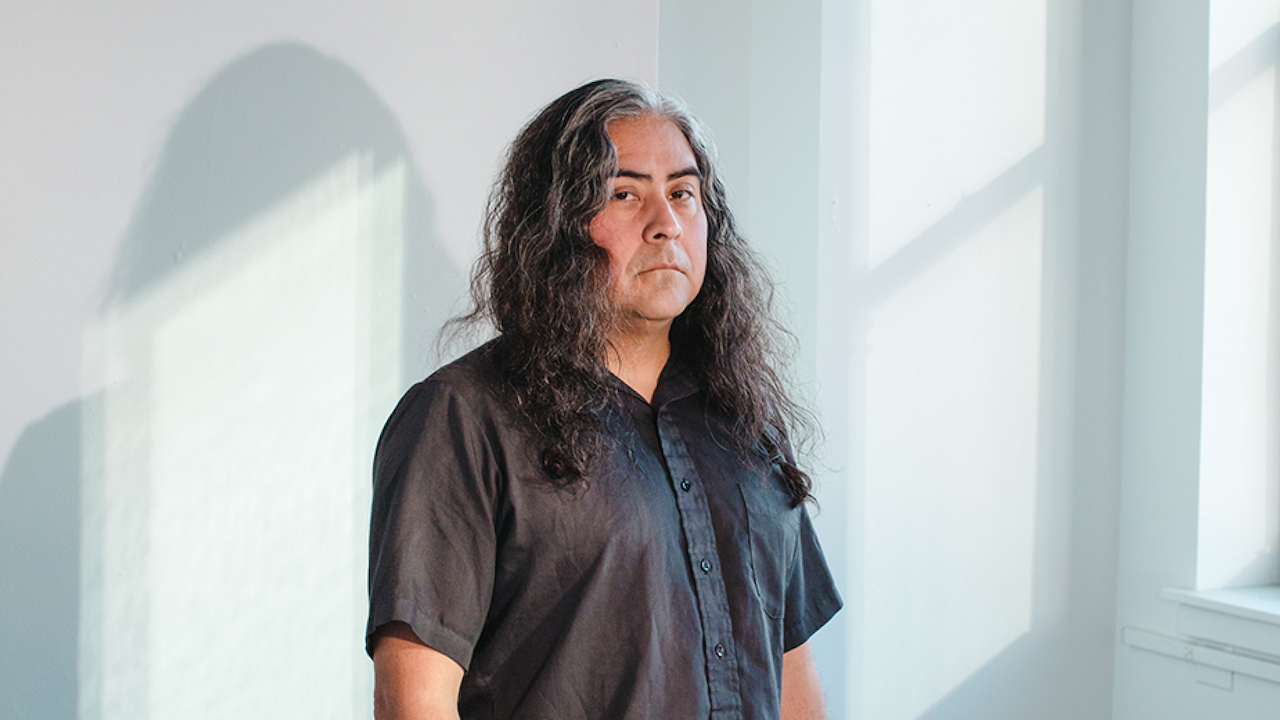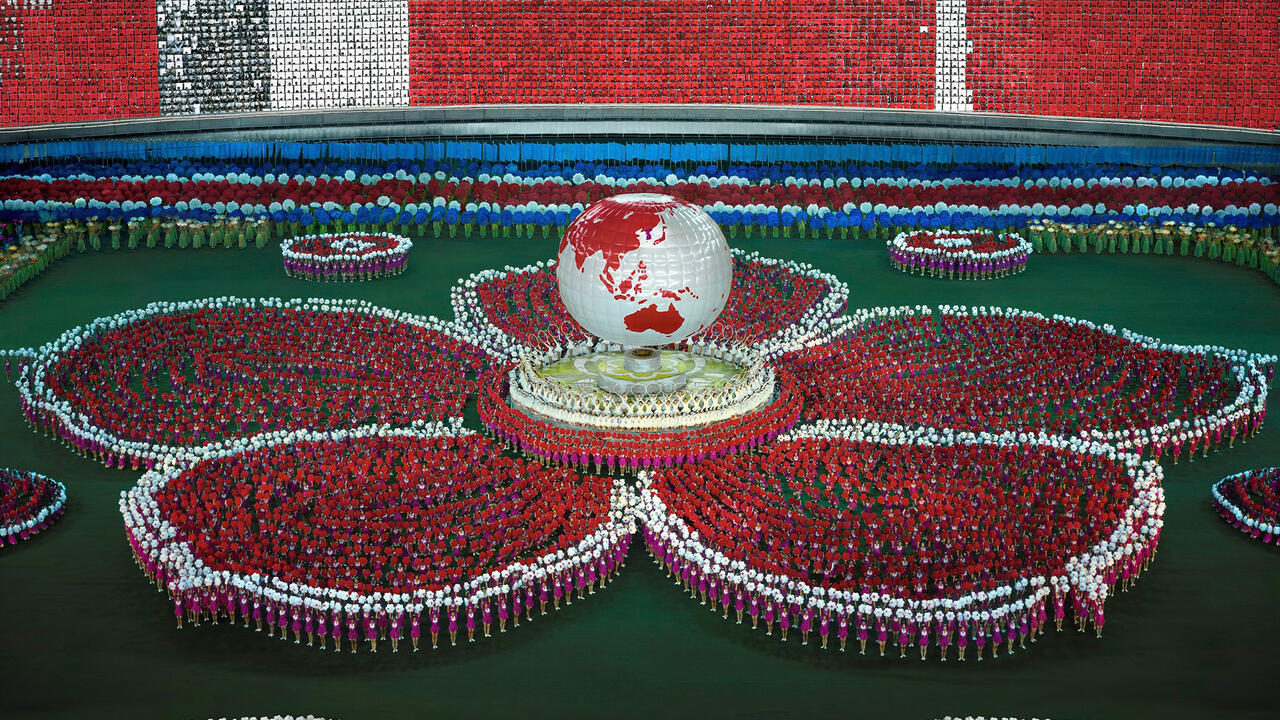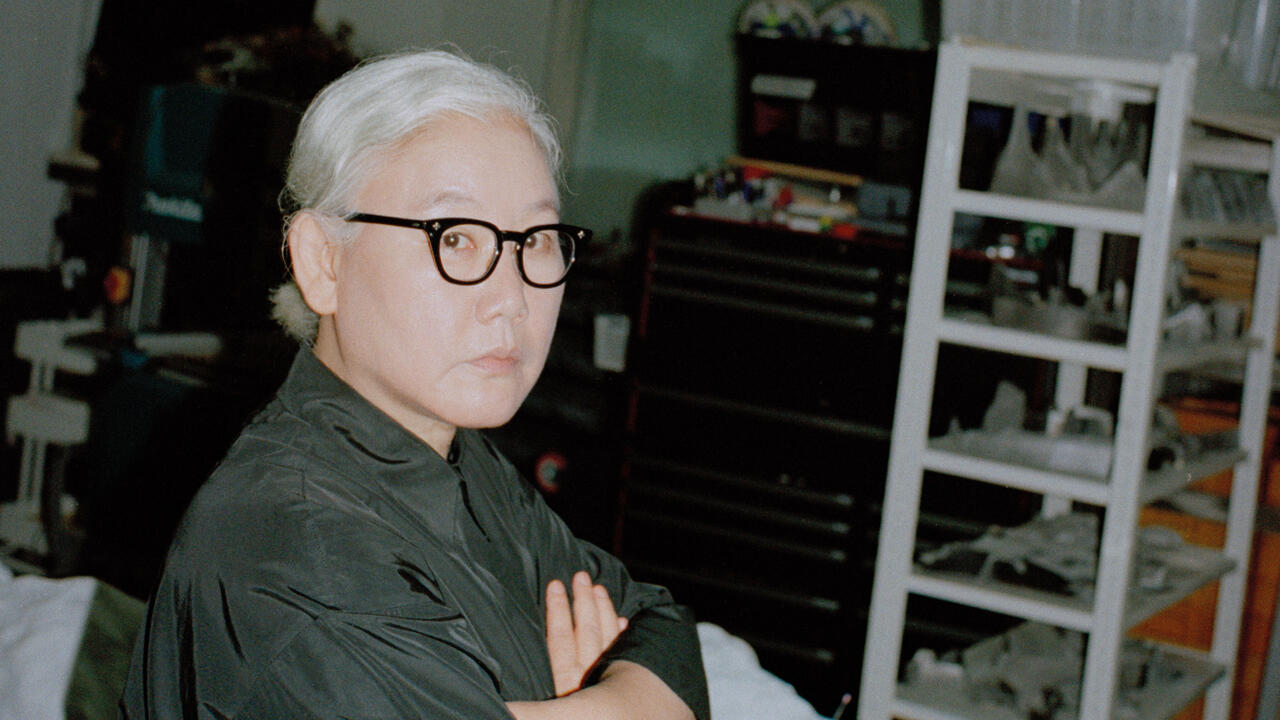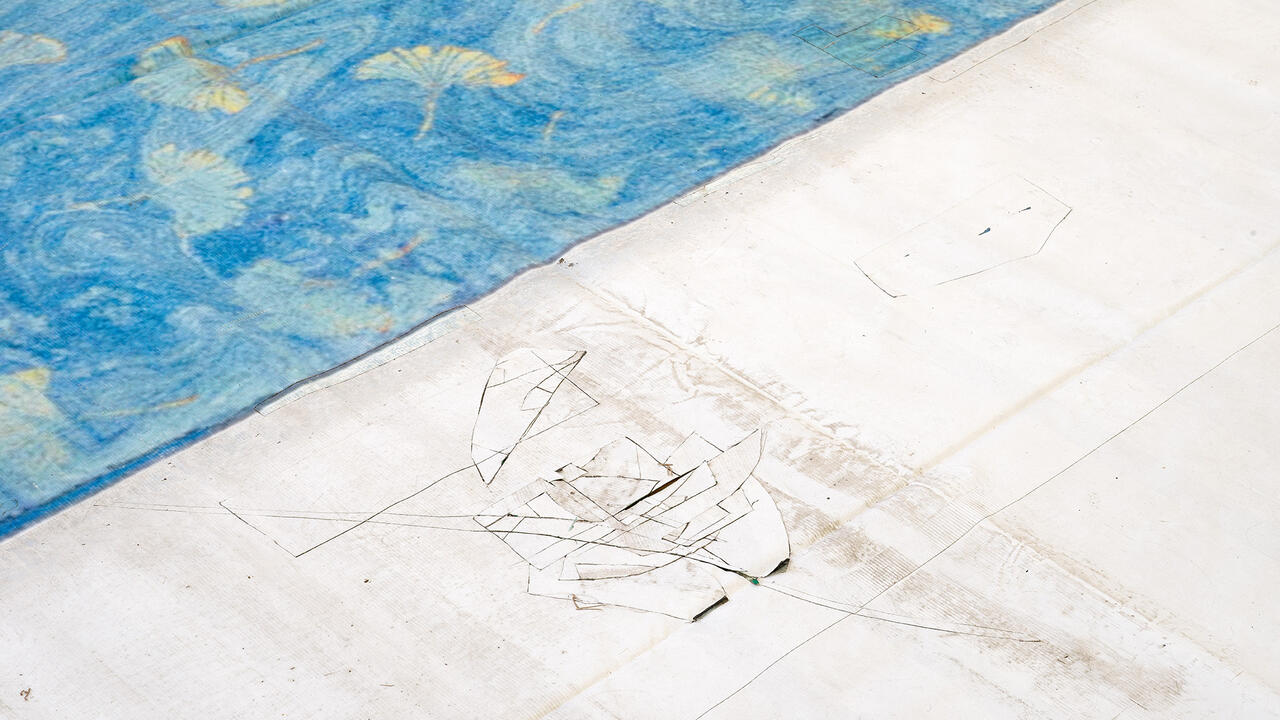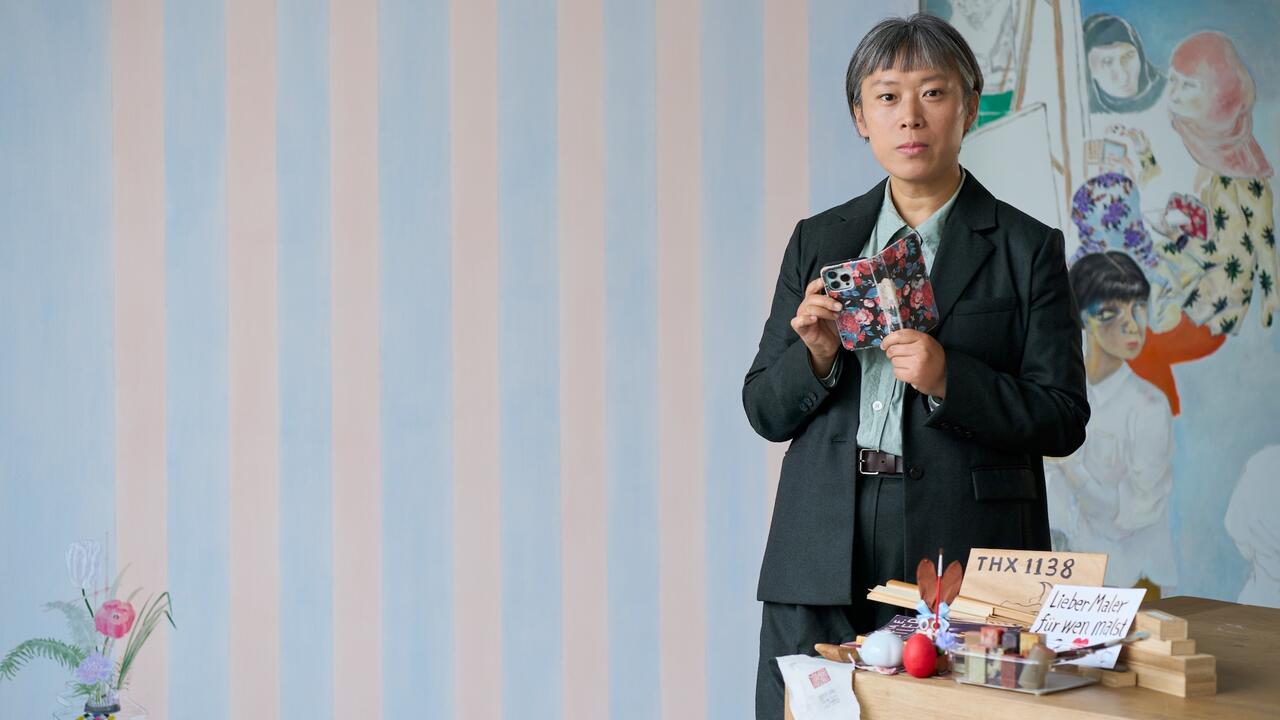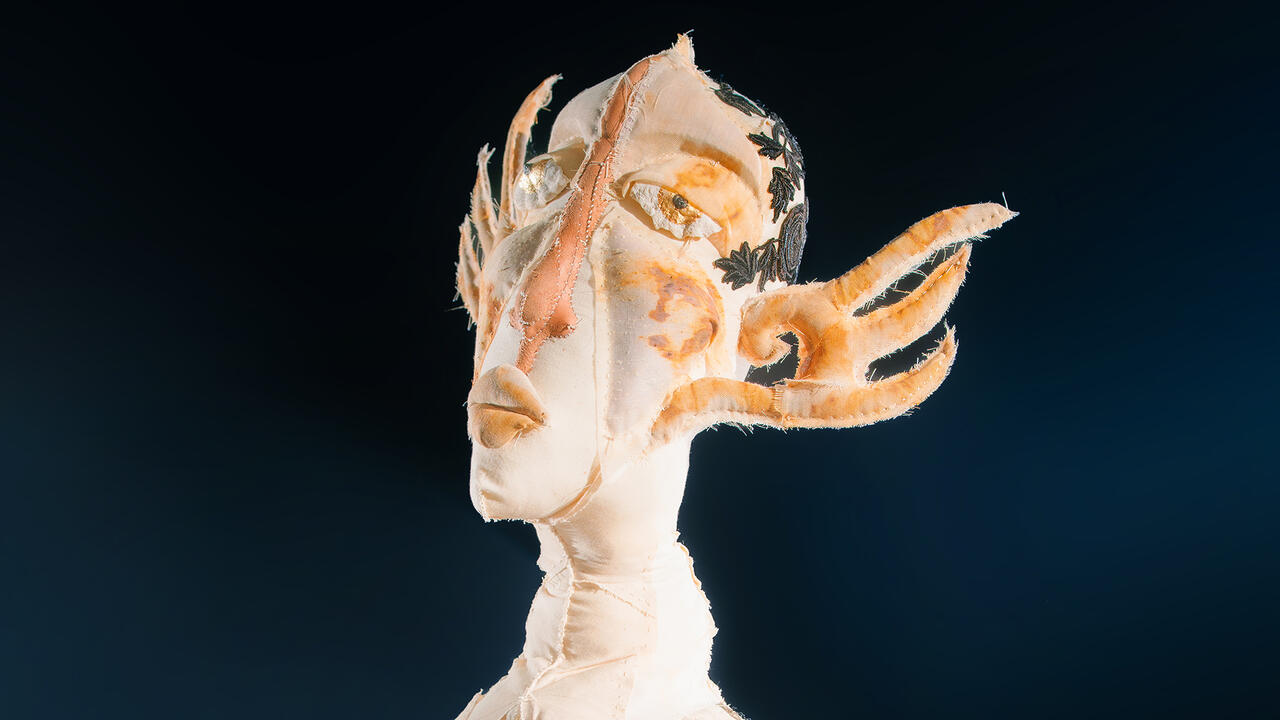Centrifugal Force: Peter Lanyon’s Immersive Landscapes
A recent show at London’s Hazlitt Holland-Hibbert, coinciding with a new catalogue raisonné, shows the artist mapping space from outside and within
A recent show at London’s Hazlitt Holland-Hibbert, coinciding with a new catalogue raisonné, shows the artist mapping space from outside and within

Nestled away by the entrance to London gallery Hazlitt Holland-Hibbert’s recent Peter Lanyon exhibition – which was timed to coincide with the publication of Toby Treves’s magisterial Peter Lanyon: Catalogue Raisonné of the Oil Paintings and Three-Dimensional Works (Modern Art Press, 2018) – was a linocut: The Cornish Miner (1949). Depicting the cross-section of a tin mine in Penwith, the westernmost peninsula of Cornwall, it might have easily escaped notice. Indeed, it hardly looks like a work of Lanyon’s at all: he rarely employed this form, being so committed to the textures and depths of pigment; and it is straightforwardly representational in a way that his own landscapes never are. And yet, this linocut holds the key to Lanyon’s oeuvre.

Lanyon was born in 1918 near St Ives, when it was still a fishing village rather than an art colony and tourist destination. As he entered adulthood, however, his home became the focal point for modernist art production in Britain, notably after Ben Nicholson and Barbara Hepworth – along with the critic Adrian Stokes and the Russian émigré constructivist Naum Gabo – decamped to Cornwall at the beginning of World War II. Stokes would be the young Lanyon’s mentor, and Gabo an abiding inspiration. (Lanyon often produced three dimensional ‘constructions’ as studies for his large-scale paintings). Like Nicholson and Hepworth, Lanyon sought to reconcile post-cubism with the British landscape tradition and, from this tiny outpost, he too would become a major player in postwar international modernism – Mark Rothko said of him: ‘Upon seeing his work I felt he was, indeed, a poet.’ Lanyon’s Cornwall is not that of the artist-holidaymakers, and nor are his landscapes pastoral idylls. They are marked by the work of tin miners, farm labourers, fishing communities – ‘more ore than orchard’, as John Berger put it in an early review. His linocut has three layers, moving from the engine house down the mineshaft to the miners themselves below ground. Labour is unseen, he tells us; but the linocut can also be read as a diagram of Lanyon’s own painterly practice, where layers of impasto are worked up over a masonite board, only for this densely wrought surface to be scored with knifemarks, so the painting bears witness to the depths of its making.

And there is a further layering at work, as the paintings superimpose different kinds of spatial experience and spatial representation upon one another. A painting like Godrevy (1949: of the lighthouse opposite St Ives, made famous by Virginia Woolf’s 1927 novel) blends an aerial view of lighthouse, island and promontory, with views from the land. Space can be mapped from outside, or from within – Lanyon brings both into the same composition. Trevalgan (1951) takes this further, with its thick blue and white brushes both serving as a compositional frame-within-a-frame and depicting the sea surrounding the peninsula; different textures and shades of green, which initially come across as abstract explorations of form and colour, start to evoke the layout of fields and hedgerows. At first glance these paintings are difficult, recalcitrant, rebarbative even; Lanyon spoke of attempting to get two miles’s worth of horizon into one composition and they have a centrifugal force that can feel cluttered, breathless. The intensity of surface effects never lets up; the monochrome greys and greens are unremitting. Similarly, the paintings cluster together elements that are referential (a flower here, a footpath there), symbolic, gestural: Lanyon is fascinated by how we orient ourselves in the places we inhabit but refuses to allow his viewers a secured foothold for orienting themselves in his paintings.

Given his interest in mapping his landscapes from above, it is perhaps no surprise Lanyon would take up gliding, as he did in 1959 (and which led to his death, from injuries sustained in a crash-landing, aged just 46). And yet, the gliding paintings he would produce – perhaps the most concerted, and distinctive, project of ‘weather painting’ since J.M.W. Turner – are themselves less interested in aerial views of the land than his earlier landscapes were; rather, they conjure up the experience of bodily immersion in thermals and updraughts. Both composition and materiality of the paintings shift decisively at this point: whereas Lanyon’s painting almost exclusively used a masonite board support beforehand, in April 1959 he suddenly embraced canvas. The brushstrokes soften, the compositions become gesturally freer, and yet more focused; more dynamic, and yet pervaded by a stillness that is quite new.

This exhibition made clear how Lanyon’s shift in composition was linked to a change in material support; yet it did so by leaving out four crucial years in his development. However, Treves’s catalogue raisonné fills in this period, and indeed everything else. It is an exemplary achievement in art scholarship: in addition to uncovering lost works and tracking sales histories, it provides unobtrusive critical analysis, at once meticulous and self-effacing. It was ten years in the making, and what is striking is how in this time Lanyon’s reputation has been transformed (not least by the 2015 Courtauld exhibition ‘Soaring Flight’, which Treves co-curated). Lanyon’s concern with landscape and place speaks to our current moment, and as we reevaluate the history of 20th century painting, Lanyon is sure to figure ever more prominently.
Main image: Peter Lanyon, Bojewyan Farms, 1951-2, oil on board, 1.2 x 2.4 m. Courtesy: © Lanyon Estate, British Council Collection








